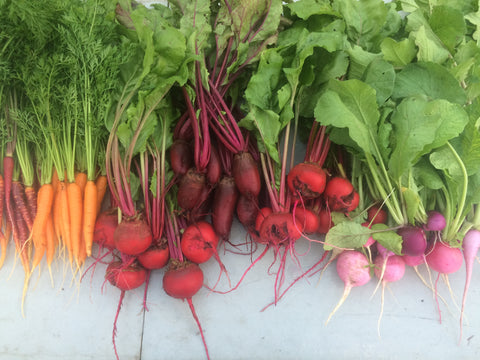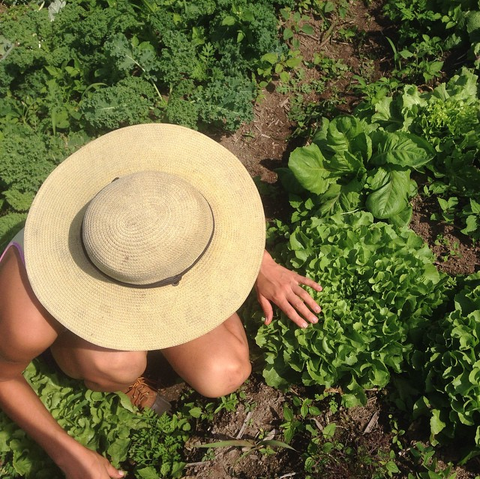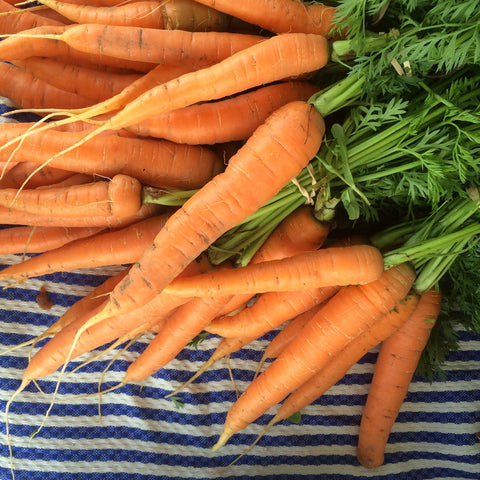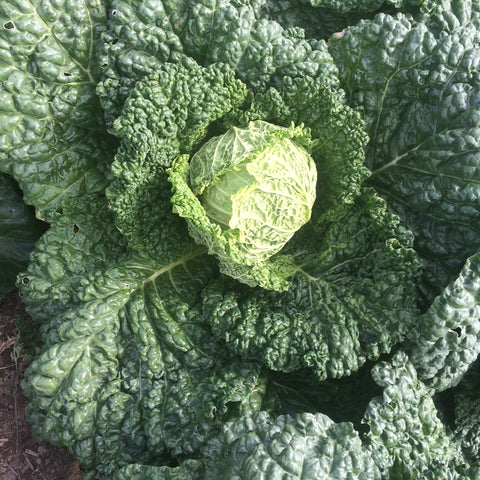This week is all about choices! You guys are a big group and sometimes it's hard to grow enough of the same crops for everyone so we are letting you choose between a few varieties of kale, two different radishes and three very different kitchen herbs. It's a win/win situation because you get a chance to have preferences and we get to give everyone in the CSA a bounty!
Over the last few weeks we have harvested lots and worked hard to replant all of the newly freed up space at the farm, but we are experiencing a small production gap in our greens department. The same seems to have happened at the two farms who contribute to the CSA the most, Verde Farm and French Farms, so this week everyone will have a bit of a greens break and we will focus on roots and fruits instead.
Large and Small shares get:
Kale (choose between Lacinato, Red Russian, Curly, or Rainbow kale)
Salad turnips with tops
Carrots
Radishes (choose between Watermelon radish or Shunkyo Long radish)
Herb (choose between Oregano, Parsley or Cilantro)
Strawberries
Bananas
Large shares also get:
Frisee
Poblano peppers
Spicy mustard sprouts


By now we are all familiar with using radishes in many ways, this week we will have two varieties for you to choose from: watermelon and shunkyo. Watermelon radishes are great for those of you who don't like a super spicy radishes, or who prefers a meatier radish for roasting. If sliced into thin rounds their bright pink interiors add a beautiful touch of color and flare to any salad, but we think their flavor really shines when slow roasted in the oven with just olive oil and salt. Shunkyo are bright fuchsia on the outside with a white interior, and raw they are super spicy! If halved lengthwise they can be sautéed in butter just like a french breakfast radish, or if you're up for the spice they can be eaten raw.

Turnips, although less familiar, are just as versatile. They can be sliced thin and eaten raw in salads, or roasted, and it seems that their most common preparation (according to my internet searches) is a mashed turnip dish, which sounds really delicious and comforting. Check out this recipe, for roasted parsnips and radishes, it looks great and it is winter after all, time to eat hearty roasted things like the rest of the country. Turnip tops, like radish tops, are a bit prickly raw but are delicious and healthy when cooked, so don't forget to take advantage of those tops. To make veggie storage easier and keep the roots fresher, its best to remove greens from your roots when you get home, and store them separately in a plastic bag or wet cloth.

This week you will also get a chance to pick an herb of your choice: we are harvesting oregano, cilantro and parsley. If you feel very strongly about your herb selection we suggest you show up early, as certain herbs may be completely gone towards the end of the day. Last week you got parsley but if you're like me and love parsley and think cilantro smells like soap, then there's no shame in picking it again! You can use the oregano fresh for a healthy and spicy flavored anti fungal tea (it also aids in digestion), or hang it to dry in a cool area with good air flow, and save it for your pantry.

And now, on to the fruit! Since it is strawberry season, and South Florida is a large strawberry producing region, we have found them again, freshly picked from a homestead farm for us all to enjoy. We figured no one would mind getting strawberries a few times through the season. Last time we included them in the shares we almost had a riot on our hands from the market customers who desperately wanted to buy the CSA strawberries. This week we ordered a few extra quarts so that everyone can share in the sweetness. Last time we included strawberries in the shares Muriel and I got to take home the mushy ones; we both made fresh jam which we used for homemade pop tarts and for topping morning bowls of greek yoghurt. They are amazing fresh or jammed!

All of a sudden three large bunches of bananas ripened at the farm so we can give everyone a bunch this week. Bananas are such a staple and it's really cool that we can grow them so easily in South Florida year round. Lucky us. My favorite way to eat em is dried, as an easy snack on the go. Having a dehydrator, even a small one, is a really good idea in this town which is so plentiful of fruit. For just over $100 you can get a small counter top Excalibur dehydrator (it's the size of a tiny toaster oven). Check out www.excaliburdehydrator.com

We grew sprouts for ya'll in our greenhouse! This week we are harvesting spicy mustard sprouts and hopefully in the following weeks we'll get to try a few different varieties. These are so fun as a garnish on anything from tacos to avocado toasts to cooked dishes like pasta or soup.






































